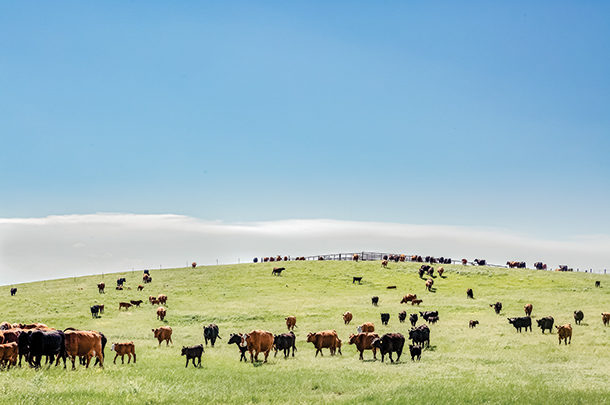It wasn’t in March when the calves start hitting the ground, nor was it late in the year when he finally got a check for all of his hard-earned work and investment into his cattle. His response to me was, “The day I put the feed truck in the back of the barn to hibernate until next winter is the most profitable day of my year.”
Many of us in the industry have concluded our 2020 calving season, and, with spring in bloom, we’re eager to put up our feed trucks and let the ecological systems do their job of supporting our cattle. If you rely primarily on warm-season pasture such as bermudagrass or native pasture to graze cattle, the winters can get awfully long. A vast majority of the southern Great Plains was fortunate to have a mild winter and a timely green-up, but don’t be deceived by those shards of green dotting the pasture, although both you and your cattle are glad to see them.
“Chasing green” is one of the most detrimental things to happen to a cow during the interim between calving and breeding. A 1,200-pound cow 60 days post-calving requires 16.5 pounds of total digestible nutrients (TDN) and 3 pounds of crude protein (CP) on a dry matter basis per day, considering the National Research Council’s recommended 27.8 pounds of dry matter intake a day. The average 20% range cube, fed at 5 pounds per head per day, delivers about 3.6 pounds of TDN.
Thus, even if you were still supplementing when those shards of green showed, she was still scavenging for about 13 pounds of energy from your pasture. A cow will expend plenty of energy seeking out those young, nutrient-dense leaves and will rarely find enough of them to meet both her nutrient and dry matter intake requirements.
It’s no secret that the feed bill represents the largest chunk of a cow’s maintenance cost, and we’re always eager to reduce that feed bill as much as possible. It can be tempting to cut the corner at the tail end of our feeding curve, but not only is this not the time and place to cheat her a little bit – it’s the time and place to be more mindful than ever of her nutritive needs. Causing a nutritive deficit post-calving can be detrimental to both her reproductive efficiency and to calf performance.
While one of the most labor-intensive times of year for you – calving – has come and gone, she has just entered the most metabolically strenuous time of year for her. A vast majority of those nutrients are going straight into her calf, and it’s likely she lost some condition coming out of winter. It’s worth noting that a cow losing some condition during the winter is nothing to be ashamed of. A fluctuation in body condition is to be expected with changing forages and requirements, and it represents the ebb and flow of nature.
Avoiding those changes in condition altogether is never profitable, but managing them certainly is. It is difficult, costly and impractical to “feed her up” from a less-than-ideal condition post-calving. However, what can and should be done is to keep her from losing condition even further and to make sure she has sufficient nutrition to maintain, lactate and breed back.
Breeding season is upon us, and producers who were intentional about providing the right nutrients to their recently calved herds can be confident they have set their cows up to successfully conceive early in the breeding season.
Don’t prematurely retire the feed truck at the first sign of green – shutting her off from one day to the next will usually cost you more than it saves you. Be intentional about your investment in both feed and your cows, and wean your herd off of feed as forage productivity starts to increase. Utilize monitoring tools like body condition scoring, manure scoring and forage tests to help you understand the gap between her requirements and available forage throughout the year, and manage your calving season, grazing and supplementation to most efficiently reduce that gap.
We are all chasing green this time of year, forage and otherwise, but opt for moderation going into breeding season to help set yourself and your cows up for a profitable year to come. ![]()
Getty Images.

-
Caitlin Hebbert
- Livestock Consultant
- Noble Research Institute
- Email Caitlin Hebbert








